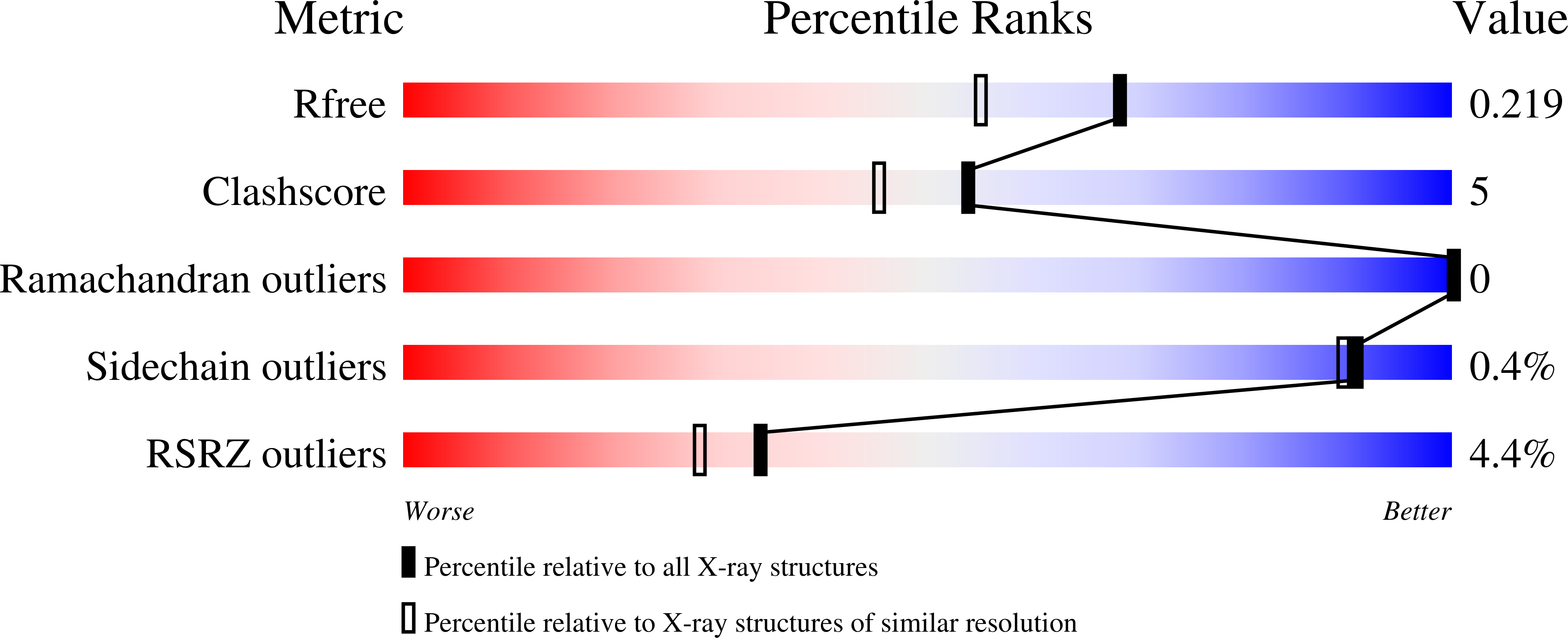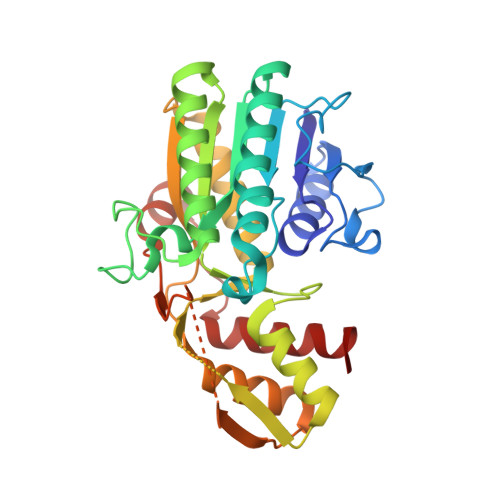Crystal structure of UDP-galactose 4-epimerase from the hyperthermophilic archaeon Pyrobaculum calidifontis
Sakuraba, H., Kawai, T., Yoneda, K., Ohshima, T.(2011) Arch Biochem Biophys 512: 126-134
- PubMed: 21645492
- DOI: https://doi.org/10.1016/j.abb.2011.05.013
- Primary Citation of Related Structures:
3KO8 - PubMed Abstract:
The crystal structure of a highly thermostable UDP-galactose 4-epimerase (GalE) from the hyperthermophilic archaeon Pyrobaculum calidifontis was determined at a resolution of 1.8Å. The asymmetric unit contained one subunit, and the functional dimer was generated by a crystallographic two-fold axis. Each monomer consisted of a Rossmann-fold domain with NAD bound and a carboxyl terminal domain. The overall structure of P. calidifontis GalE showed significant similarity to the structures of the GalEs from Escherichia coli, human and Trypanosoma brucei. However, the sizes of several surface loops were markedly smaller in P. calidifontis GalE than the corresponding loops in the other enzymes. Structural comparison revealed that the presence of an extensive hydrophobic interaction at the subunit interface is likely the main factor contributing to the hyperthermostability of the P. calidifontis enzyme. Within the NAD-binding site of P. calidifontis GalE, a loop (NAD-binding loop) tightly holds the adenine ribose moiety of NAD. Moreover, a deletion mutant lacking this loop bound NAD in a loose, reversible manner. Thus the presence of the NAD-binding loop in GalE is largely responsible for preventing the release of the cofactor from the holoenzyme.
Organizational Affiliation:
Department of Applied Biological Science, Kagawa University, Ikenobe, Miki-cho, Kita-gun, Japan.
















